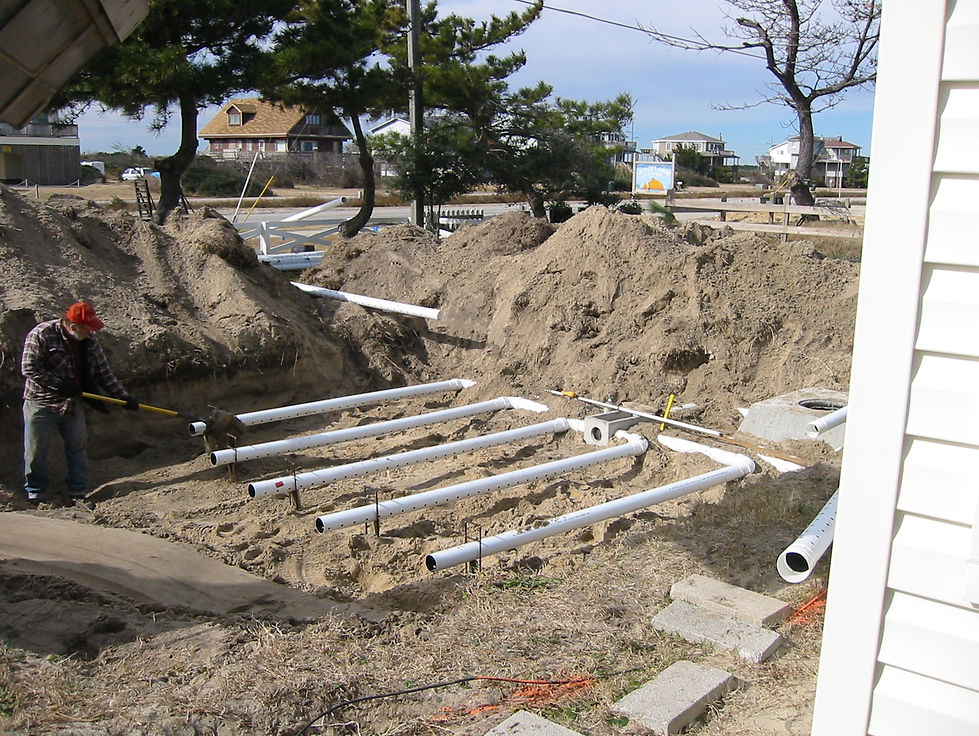
septic systems
A septic tank system is essentially an isolated sewage treatment system on a much smaller scale than a municipal system. Septic systems are required in locations where access to a main sewer is not possible or not economical. Placement is commonly 100’ from wells, 50’ from streams, and 20’ from buildings.
In a septic system anaerobic bacteria decomposes and constructs the mineral composition into a more sanitary and biologically friendly mixture. Septic tanks are typically between 750 and 2,250 gallons and are commonly made of polymer or precast concrete. There is an inlet pipe for wastewater to enter the tank and an outlet pipe leading to the drain or leech field.


Precast concrete , 2-chamber septic tank

There are typically 2 chambers in the septic tank. The first chamber takes in the raw sewage and it naturally separates into 3 ‘layers’. Sludge solids collect on the bottom, liquid remains in the middle, and ‘scum’ accumulates and is suspended at the top. The sludge is digested by anaerobics and ultimately turns to liquid. The liquid makes its way into the second chamber where it continues to settle. By the time the second chamber has processed the lesser amount of sludge, it’s liquid has become considerably cleaner and is suitable for exit through the outlet pipe and into the drain or leech field.
The leach field is typically a series of parallel and perpendicular pipes meant to seep or leech the liquid into the ground, bedded in porous aggregate trenches to aid in seepage. Here, whatever impurities remain, percolate and are trapped and eliminated by the soil. Pipe commonly used for leech field systems is also pcv sdr35 but with perforated holes to allow for seeping and percolation through the soil.


Sometimes a percolation test is required where the ‘drainability’ of the soil is tested to assure the planned installation location is suitable to house the leech field in draining and filtering waste liquid. Sandy soils tend to percolate best. Some high-fine clays or silts may be unsuitable for proper percolation and standard leech field designs.
If site topographical conditions are suitable, gravity can be utilized to drain from the outlet of the house into the septic tank and then into the leach field. Otherwise a special pump will be required to lift the sewage into the septic tank


Pipe used for house to tank connections is typically standard pvc sdr35 pipe. Some waste is not broken down in the tank and accumulates hence requiring periodic pumping/cleaning.
